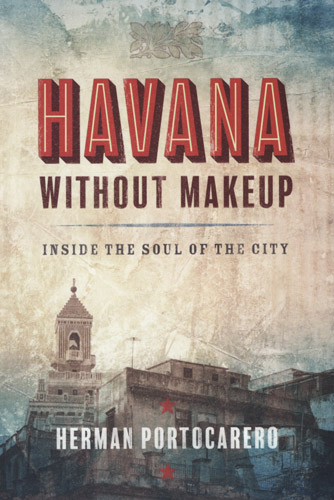Havana Without Makeup
If you’re locked into learning about far off locations through TV, movies, or social media, it’s time to stimulate your brain with a different interpretation. Herman Portocarero fulfills that task with his latest book, Havana Without Makeup: Inside the Soul of the City. Portocarero was born in Belgium of Spanish and Portuguese descent, and for the past 20-plus years has been ambassador to Havana from Belgium and then for the European Union, completing his post in September 2017. His take on Cuba’s capital city offers unique insights.
If you’re locked into learning about far off locations through TV, movies, or social media, it’s time to stimulate your brain with a different interpretation. Herman Portocarero fulfills that task with his latest book, Havana Without Makeup: Inside the Soul of the City. Portocarero was born in Belgium of Spanish and Portuguese descent, and for the past 20-plus years has been ambassador to Havana from Belgium and then for the European Union, completing his post in September 2017. His take on Cuba’s capital city offers unique insights.
The words Without Makeup set the tone for this book. Portocarero candidly exposes the city in what he calls “a rambling walkabout.” He instills it, in short chapters, with all things that have made Havana the metropolis it is today.
He writes:
Cuba developed differently from other Spanish colonies. Its struggle for independence came much later than in the rest of Latin America, and took a different form. [ . . . ] Cuba was more mixed and diverse than the other islands
He adds that Cuban beliefs “became a mixture of the European and the African.” Even today, “nowhere in the Caribbean, possibly nowhere in the Americas, are African traditions stronger and more alive than in Cuba.”
It’s also a country with a history of evolving relationships with Russia, France, China and the United States. In particular, the Cuban Revolution during the 1950s had a powerful effect on the country, even affecting key products. Writing about trade disputes over Cuban rum and cigars:
Hatred or at least very deep resentment of the nationalizations carried out by the Revolution is still an ingredient in U.S.-Cuban relations, albeit only for a minority among U.S. politicians. But to wealthy Cuban families who were despoiled of their investments and at the same time of all the trappings of a unique and opulent lifestyle, that hatred is almost a birthright.
On the other hand, “Of all the things Americans left behind in Cuba after 1959, baseball was one of the strongest and most enduring. It remained the national sport,” he writes.
Sports aside, perhaps the most famous Cubans from the 20th century are Fidel Castro and Che Guevara. Castro, of course, was the communist revolutionary who became prime minister and then president during the years 1959 to 2008.
Guevara is equally famous, if not by his deeds, then by Alberto Korda’s photograph, which became the basis for the red and black poster that Irish artist Jim Fitzpatrick created in 1965. Portocarero remarks:
About half of the girls I knew in college had a Che Guevara poster on their dorm wall. [ . . . ] The girls were often innocent of politics and saw only the man. He himself, rather a prude, would certainly not have appreciated being made part of the sexual revolution.
Other names, perhaps less familiar to outsiders, had great influence on Havana’s history and culture. Carlos Manuel de Céspedes, for example, “launched the first call for liberation from Spain in 1868.” Then there’s Fernando Ortiz, whom Portocarero calls, “the greatest of early Cuban anthropologists.” And Alejo Carpentier, “Cuba’s greatest twentieth-century writer,” whose book, El siglo de las luces, translated into English as Explosion in a Cathedral, was considered his masterpiece.
Another famous writer, Ernest Hemingway, though not a native, is still associated with the Havana area. Before buying a home outside the city, he stayed at the Hotel Ambos Mundos, where “He’s said to have written For Whom the Bell Tolls in room 511.”
Race and religion get attention in this book, along with rumbas and music. “In the mid-1990s, when Cuba opened up for tourism, Cuban music became very popular worldwide.” Music lovers may be familiar with trumpet player Arturo Sandoval, an Afro-Cuban jazz performer, who was portrayed in the film For Love or Country by actor and Havana native Andy Garcia.
Portocarero, who has published more than 20 fiction and nonfiction books, sums up this book when he writes:
I know of no city with a richer and more fascinating variety of urban textures, spontaneous recycling of spaces and materials, or more lively interactions between flesh and stone. This covers the entire spectrum from the graceful to the desperate, from the super-kitsch to the intuitive or the resolutely post-modernist, with a good measure of bad taste thrown in [ . . . ].
Havana Without Makeup: Inside the Soul of the City is an encyclopedia of facts, keen analysis, and frank opinions. As Cuba’s relationship with the United States continues to evolve, it wouldn’t be surprising for this prolific writer to produce a follow-up in the years to come.





